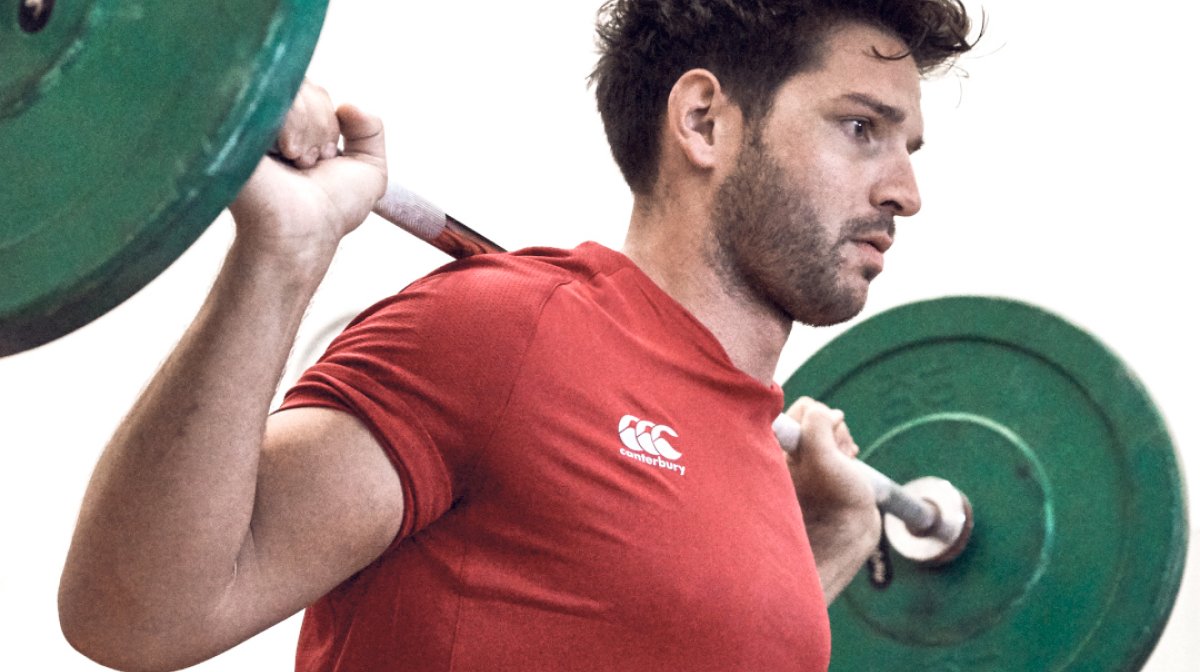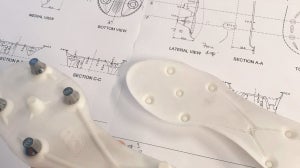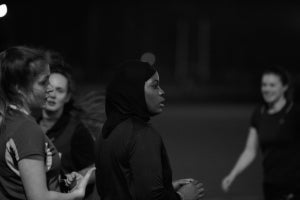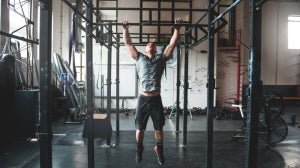
Squats should be a staple of your workout regime as they engage multiple areas of your body at one time. The way you hold the bar or the stance you decide to choose will impact on the area of the body you work. The classic barbell squat will add bulk and trains everything from your glutes, quads, hamstrings and “intestinal fortitude”, but for a whole body workout, you have to be aware of the multiple variations upon the squat theme.
Back squat
The movement you’re most likely to witness most on the squat rack; the back squat is absolutely perfect for conditioning your lower body, be you a forward pushing off in the scrum or a back jinking through a backline. The back squat, among all the different type of squats, really works the posterior chain – the glutes, the hamstrings and the spinal erectors – as well as building up your lower body mass to even the biggest opposition player is going to find it a trial to get you on the turf.
Your grip on the bar should be slightly wider than shoulder width once you’ve put the bar just below the top of your trapezius on your lower back. Always make sure your core muscles, especially your shoulders and upper back, are taut and well-aligned throughout the lift, and try to use your hips as a hinge, keeping your chest up and out, and the crease of your hip lower than the top of your knee. Reverse the movement gently but with great control of your core muscles until you are back in your starting position.
Front squat
This variation of the squat has become increasingly popular through its use in CrossFit disciplines and because it’s easier to do well than its back-squat brother. The front squat works your quadriceps and upper back more, too, as you lift the barbell across your shoulders in front of you. Make sure you have a clean grip (slightly more than shoulder width) and swing your elbows under the bar so they are pointing forward throughout the movement.
Remember: chest up and out, align your spine, and keep the weight on your heels rather than your toes. The front squat will still give your glutes and hamstrings a workout; it’s just the focus is more on your quads in this variation.
Overhead squat
If the front squat helps you condition your quads, then the overhead is the king for balance and mobility, whilst gaining greater muscular control. Snatch or press the barbell over your head so it’s above your centre of gravity, before performing a squat. You’ll need mobility in your shoulders for this movement, so gripping the bar a little wider than usual will help here. Your hips too will find a greater mobility that you can carry over into the other variations of the squat. The weight you set for yourself is not as important here as with the back squat; you’ll learn finer balance and mobility.
Alternative squats
The Anderson and Zercher squats are far less common in most gyms than those outlined above, but they have huge benefits. The Anderson squat, named after the Olympic weightlifter Paul Anderson, eliminates the bounce and momentum as you start at the bottom of the squat, making it harder to cheat. Pick the barbell from the rack at a lower than usual height to start at the bottom of your motion. You can do this variant in either front or back squat fashion.
The Zercher squat will reduce the amount of compression your spine undergoes, while still really conditioning your upper back and torso. Gym bunnies also found that there is a lot of carryover between this style and the deadlift. Because you hold the bar in the crook of your elbows (bent at your side), you should start off at a modest weight before building up. Perform a squat until your elbows are between your knees or you feel the bar touch your thighs.









